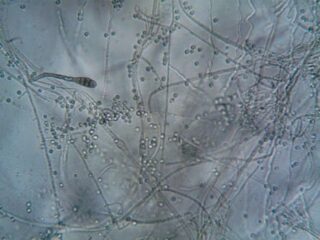
More Women's Health & Beauty Articles
Can a Yeast Infection Cause Bleeding? Insights and Answers

Yeast infections are a common concern among many individuals, particularly affecting women. A frequent question that arises is: can a yeast infection cause bleeding? Understanding the possible connections between yeast infections and bleeding is crucial for recognizing symptoms that may require medical attention. In this article, we’ll explore the potential relation and provide insights into when it might be time to seek advice from a healthcare provider.
Can a Yeast Infection Cause Bleeding?
In general, a typical yeast infection does not directly cause bleeding. However, there are circumstances where bleeding may occur along with a yeast infection. For instance, intense itching and irritation can lead to scratching, which might result in minor cuts or abrasions. These small injuries can sometimes bleed slightly.
Moreover, concurrent conditions like bacterial vaginosis or sexually transmitted infections (STIs) may also contribute to symptomatic bleeding. It’s important to differentiate between a straightforward yeast infection and other conditions that might mimic its symptoms. Seeking a proper diagnosis from a healthcare professional is advisable to understand the root cause of any abnormal bleeding.
Other Conditions That May Cause Similar Symptoms
Certain conditions can produce symptoms that resemble those of a yeast infection, and they can sometimes cause bleeding. These conditions include:
- Bacterial Vaginosis: A bacterial imbalance that can cause discharge and discomfort.
- Sexually Transmitted Infections: Infections such as chlamydia or gonorrhea may present similar symptoms and include bleeding.
- Hormonal Imbalances: Hormonal fluctuations can affect vaginal health and lead to bleeding.
Each of these conditions, while sharing some symptoms with a yeast infection, requires a different treatment approach. Accurate diagnosis from a healthcare provider is essential in these cases.
When to Consult a Healthcare Provider
If you notice bleeding along with symptoms of a yeast infection, it is important to consult a healthcare provider. They can conduct tests to identify whether another condition may be present. Additionally, if over-the-counter treatments for yeast infections do not alleviate symptoms, further evaluation may be necessary.
For readers interested in exploring more about integrative approaches to health, consider visiting our article on holistic versus traditional medicine. It offers insights into how different healthcare perspectives can complement each other for optimal wellbeing.
Maintaining Vaginal Health
Preventing yeast infections and maintaining vaginal health involve simple lifestyle adjustments, such as:
- Wearing breathable, cotton underwear to reduce moisture buildup.
- Avoiding scented soaps and feminine products that can disrupt pH balance.
- Prioritizing a balanced diet to support a healthy immune system.
These strategies can help reduce the risk of developing yeast infections and ensure general vaginal health.
For further information on this topic, consider reading from a reputable source like the Wikipedia page on vaginal yeast infections, which provides a comprehensive overview of the condition.
In conclusion, while a typical yeast infection might not directly cause bleeding, other factors associated with it can. Knowing when to seek medical advice can make a significant difference in effective treatment. This information can help determine if the underlying condition is more complicated and requires a professional assessment.
Takeaways
- Yeast infections themselves usually don’t cause bleeding.
- Associated symptoms like irritation can lead to minor abrasions and bleeding.
- Consider other conditions if bleeding occurs with symptoms of a yeast infection.
- Consult a healthcare provider if symptoms persist or worsen.
- Adopt preventive measures to maintain vaginal health.
FAQ
What causes a yeast infection?
Yeast infections are primarily caused by an overgrowth of the fungus Candida albicans, which naturally resides in the body.
Can over-the-counter treatments be effective for yeast infections?
Yes, many over-the-counter antifungal treatments can be effective. However, consulting a healthcare provider is recommended if symptoms persist.
Are yeast infections contagious?
Yeast infections are not considered sexually transmitted infections, but they can sometimes be passed via sexual contact.
How can I differentiate a yeast infection from other conditions?
Symptoms such as thick, white discharge and itching are classic yeast infection symptoms. Other infections may have different discharge colors or accompanying pain, emphasizing the need for professional diagnosis.
Does diet affect the risk of yeast infections?
A balanced diet that supports the immune system can potentially reduce the risk of yeast infection recurrence. Reducing sugar intake may also help, as yeast thrives on sugar.
Other Articles You May Find of Interest...
- Why Am I Experiencing No Period During My Pill-Free Week?
- Exploring the Remarkable Benefits of Slippery Elm for Women’s Health
- Why Am I Cramping Without a Period? Understanding Cramps but No Menstruation
- Can Ovulation Cause Nausea and Am I Pregnant If I Feel Sick?
- Unlock Clear Skin: The Benefits of Glycolic Acid for Hormonal Acne
- Instant Relief: Simple Home Remedies to Stop Itching Down There
- Effective Strategies for Naturally Stopping Breast Milk Production














